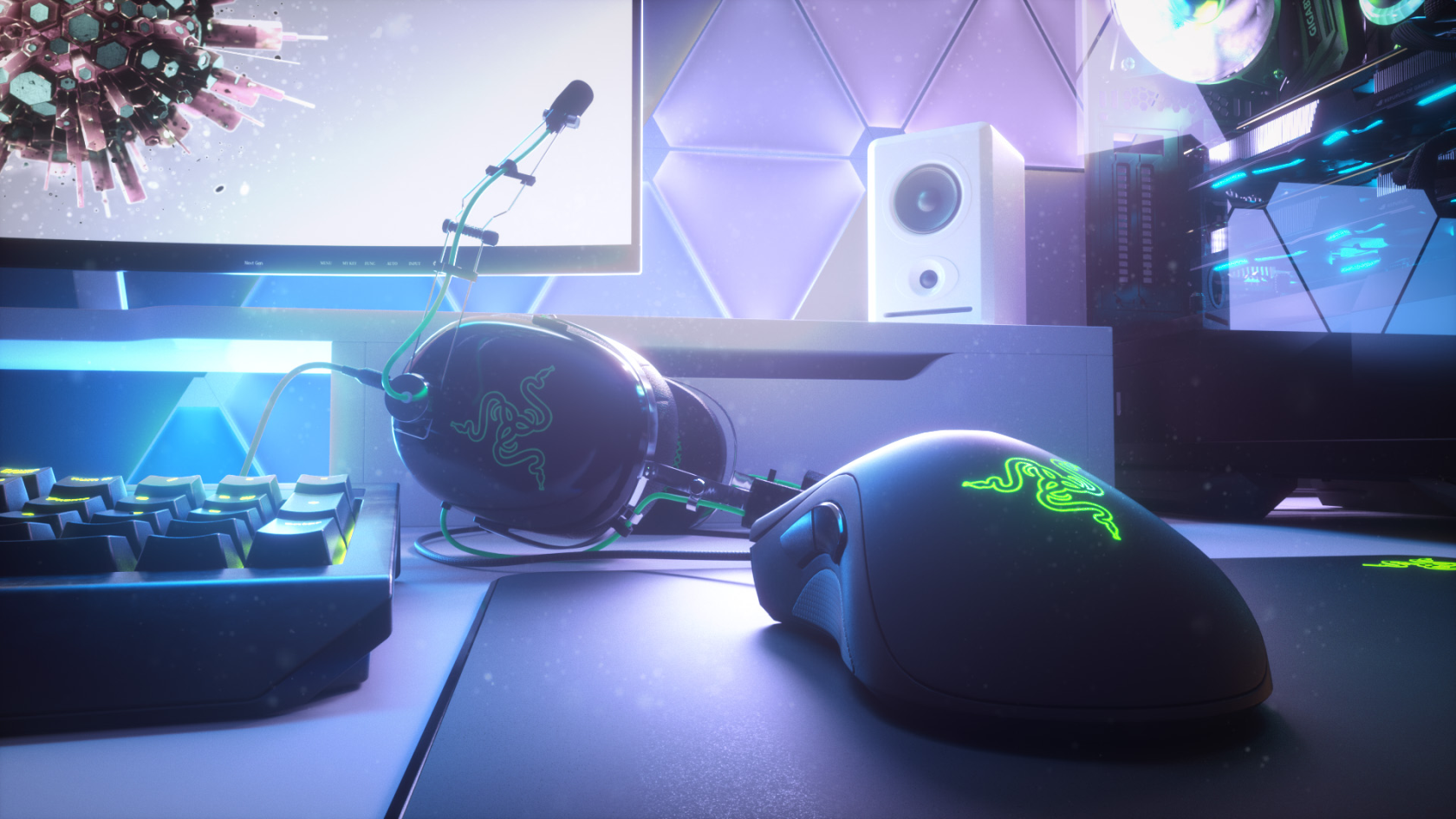Ever feel like the space around your gaming setup is a bit too static? Nanoleaf hopes to rectify that situation with their Nanoleaf Smart Light Panel and Rhythm Set. Featuring slim, bright, triangular panels with Wi-Fi connectivity, these lights promise to dynamically react to whatever game you choose to play. But is it worth your time to hang these LEDs, and does it really add to the ambiance of your games?
More Than Just LEDs
For those wondering, the Nanoleaf Smart Light Panel is a smart light product which features slim panels that you mount on one or more walls in your house. They provide 100 lumens of brightness per panel. Considering up to 30 panels can be connected to one power supply, the brightness can quickly stack up. Each panel only consumes a maximum of 2 Watts of electricity. They serve as yet another alternative to the electricity-hogging, high-temperature output misery that is incandescent lighting. Throw in networking capabilities and a microphone, and there are suddenly even gaming applications for the Nanoleaf.
There are quite a few Nanoleaf starter kits to choose from. We were sent the R Starter kit, which contains nine panels, a control unit, connectors to wire up all the panels together, and a rhythm sensor (MSRP $199.99 USD), alongside an additional expansion set that contained an extra three panels and connectors (MSRP $59.99 USD). As these are triangle-shaped, plenty of interesting arrangements can be made. The included manual had several layout suggestions, based on the number of panels available.
Each triangular panel weighs just 210 grams, or around 7.4 ounces. They are mounted to the wall with included 3M double-sided tape that is traditionally used for picture frames. Extra tape is included in case you get it wrong a few times or want to move some panels around in the future. But since standard 3M adhesive can be used, it should be easy to purchase some more later.
Augmented Planning
I’ll be the first to admit that home decorating is not my forte. Nanoleaf made it as easy as possible to visualize my creation, as their phone app includes an Augmented Reality (AR) mode, to virtually place my panels in the room I was planning on hanging them in. The result was accurate enough that I was able to mount the panels above and around my TV’s wall mount, without having to reposition them due to measurement issues. The toughest part of mounting more than one panel is getting the little connector, which sticks out from any side of each triangular panel, to insert into the neighboring panel before the panel is stuck to the wall. A magnetic connector on the sides of each panel could perhaps work a bit better, but that would also likely increase the price of these already pricey panels by a considerable amount.
Connecting the Nanoleaf to WiFi i is also accomplished via the free smartphone app. This process is much the same as if you are connecting a smart light to your home network. For those who haven’t done this before, you basically put the new light into pairing mode (something which usually occurs when the device is powered up for the first time), select it on the app, and enter your network credentials. When I completed this, I was immediately met with a message that the Nanoleaf lights needed a firmware update. Welcome to the 21st century, where even your lights need updates.
Updating is usually a quick affair, and once complete, the lights reboot themselves and reconnect to the internet automatically. During our first couple of weeks with these lights, Nanoleaf (the company) was in nearly constant contact with us as an odd issue crept up whereby the panels would lose connectivity overnight, and turn on white at full brightness, which is almost painfully bright (especially with 12 in a group). Other times, a single panel would light up a dark blue hue. A power cycle would usually resolve the issue, but connectivity would again be lost overnight. After several firmware updates, the issues appear to have gone away, as it has been about a month since the last problem.

Make Your Own Scene
Once the panels are all set up and updated, using them to their fullest potential requires the use of the app. There are options to set the panels to a static form of white light: warm white, reading light, and daylight are the built-in options. The color tab allows for various dynamic color modes to choose from, which feature different color changing schemes, along with sliders to change the color shifting frequencies to your taste. The app also allows for the creation of custom scenes, using a custom color palette and color-changing rules. Beyond that, there is also a Discover section, where new, developer and community-created color schemes and effects can be found. These custom scenes can be previewed on a device before saving them. There does seem to be a good amount of activity in the Nanoleaf community, as some of these user-submitted modes had well over 100,000 downloads. But for the product in question, the Rhythm, the aptly-named Rhythm tab contains scenes that respond to audio.
A small upgrade module is included in this set, which can be plugged into any unused slot on a panel. It includes a microphone, and seamlessly controls all panels once plugged in. The microphone appears to be sensitive enough to react to anything that you can hear within a few meters from the device, so no need to crank up your sound system unnecessarily. Selecting a rhythm scene is much the same as selecting any other scene. Once activated, simply playing games, or watching movies, or doing anything that produces sound, causes the Nanoleaf panels to react dynamically according to the scene’s rules. This can range from the soothing blue hues of the Ripple scene, to the trance-inducing craziness of Fireworks.
No matter the scene, the extra ambiance afforded by these panels is second to none. There doesn’t appear to be a bad game to pair with these panels, either. The most intense effects occur with games that have a lot of action, naturally. Something like Borderlands 3, for instance, will light up the wall, while something more chilled out like No Man’s Sky will result in a slow shift of colors peppered with the occasional flare up. There are music visualizer scenes as well, which can add to the listening experience when jamming out.
Enhanced for PC
Nanoleaf is also compatible with Razer Chroma. Games have to be compatible with the service, but if they are, then some cool lighting effects specific to the game can be used to enhance gameplay. This is a PC-only feature. There will probably never be such an integration with any console, simply due to the closed nature of that ecosystem. It’s a neat effect, but not so enhanced that console gamers are missing out on much.
Outside of gaming, the Nanoleaf panels definitely prove their usefulness. They are compatible with Google Assistant, Amazon Alexa, and Apple HomeKit. You can name your panels whatever you please (As these panels have a futuristic vibe to them, I named mine Deus Ex), and then have your assistant manage setting the color, turn them on and off, or even run specific scenes. It is fun to say “Hey Google, activate The Flames” to have it initiate the Flames scene where the panels slowly rotate through a collection of flame-colored hues. There is also IFTTT integration, so you could have the lights flash a certain color if you receive email, if an astronaut enters space in real life, and everything else you can find on the popular automation service.
So, are the Nanoleaf Rhythm panels worth an investment of at least $200? That really depends on how much you enjoy ambient lighting and the added convenience of using voice assistants. The lighting effect while playing games is fantastic, even if the experience isn’t as enhanced as on PC. This appears to be a glimpse into the future of home lighting, and with any luck, consoles will have integration into these kinds of products in the future. As it stands right now, though, the Nanoleaf is an impressive, though not quite crucial addition to any gaming setup, thanks to the Rhythm add-on.
Nanoleaf Rhythm Review
-
Nanoleaf Rhythm Review #1
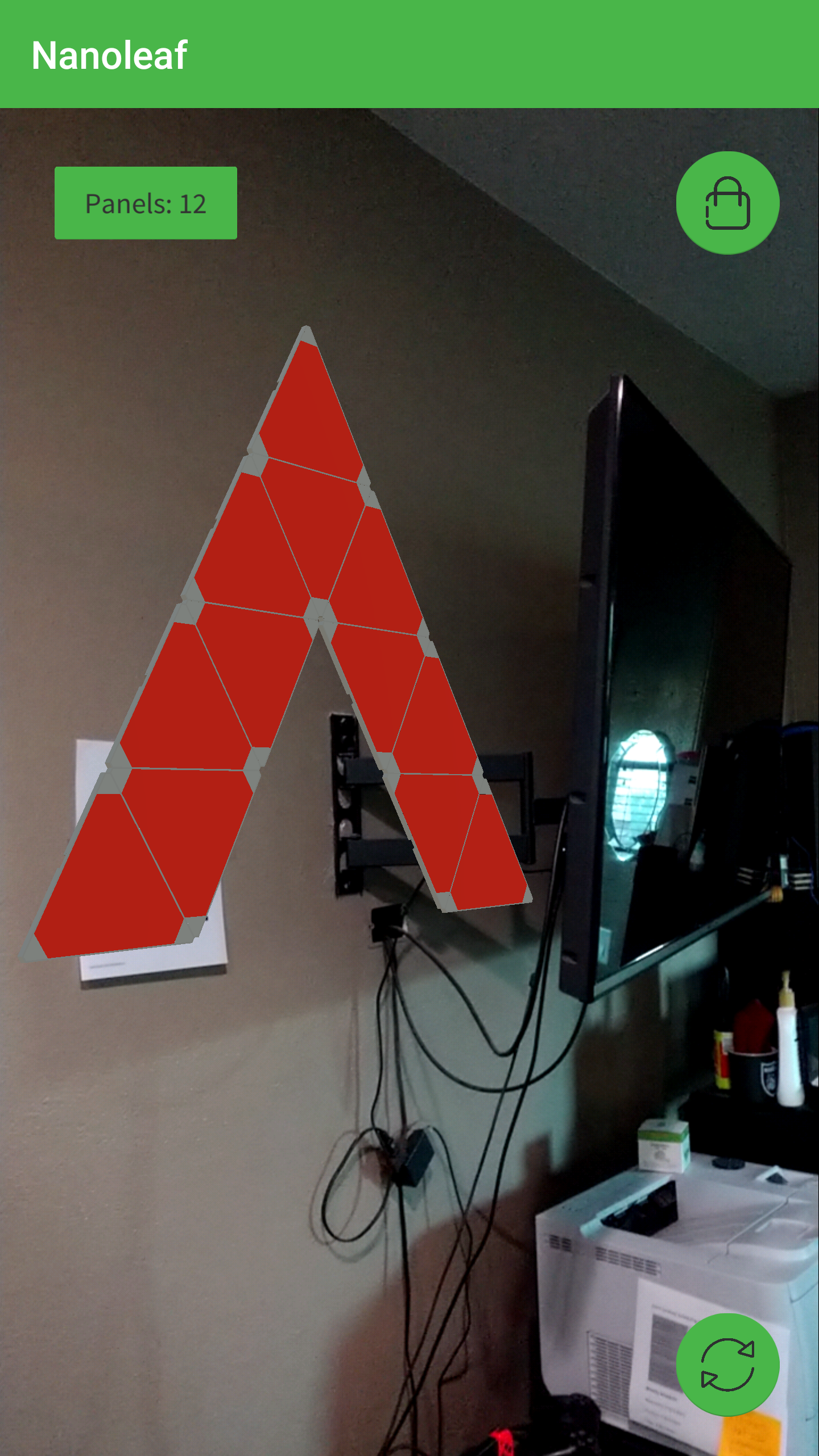
-
Nanoleaf Rhythm Review #2
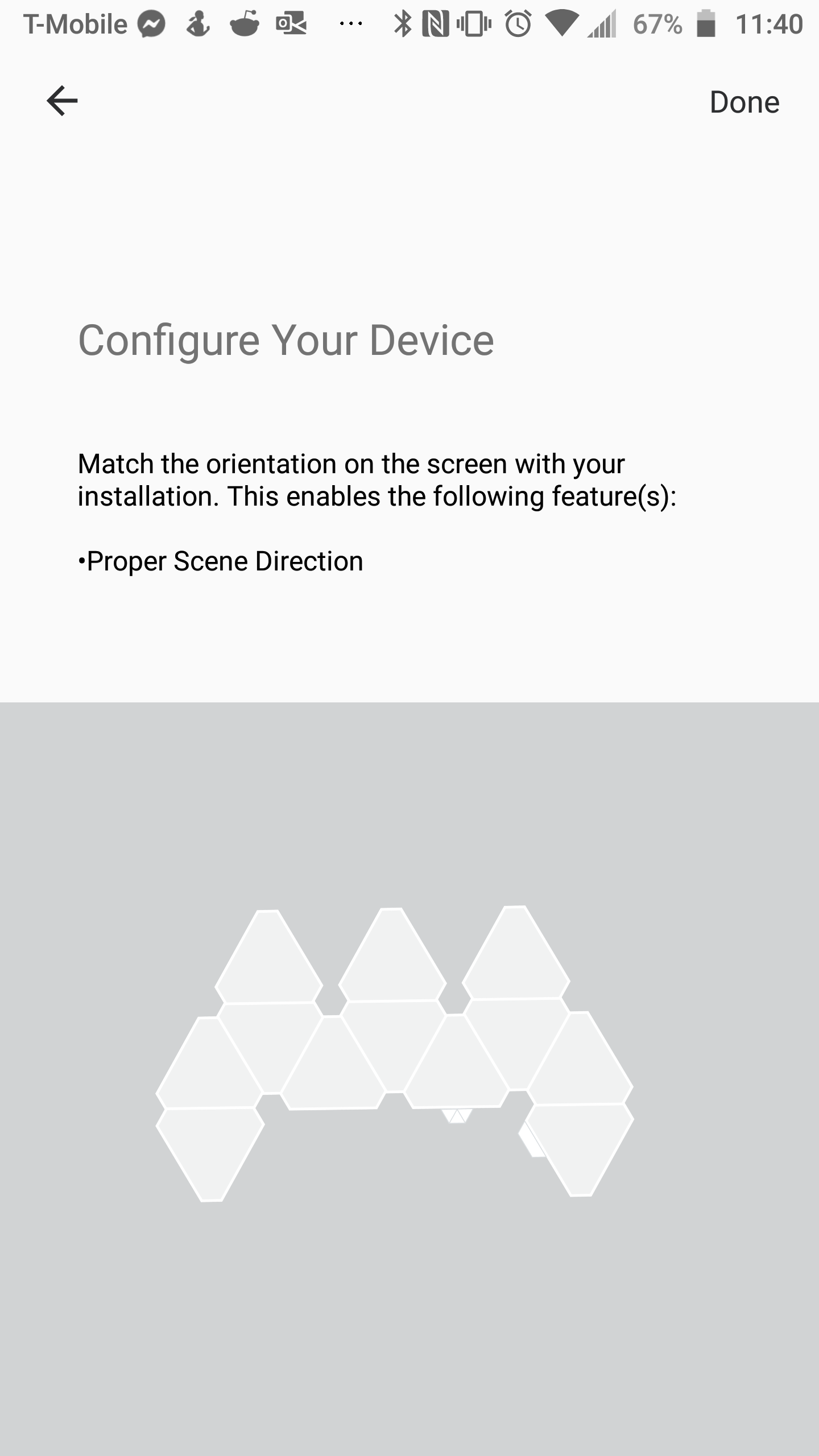
-
Nanoleaf Rhythm Review #3
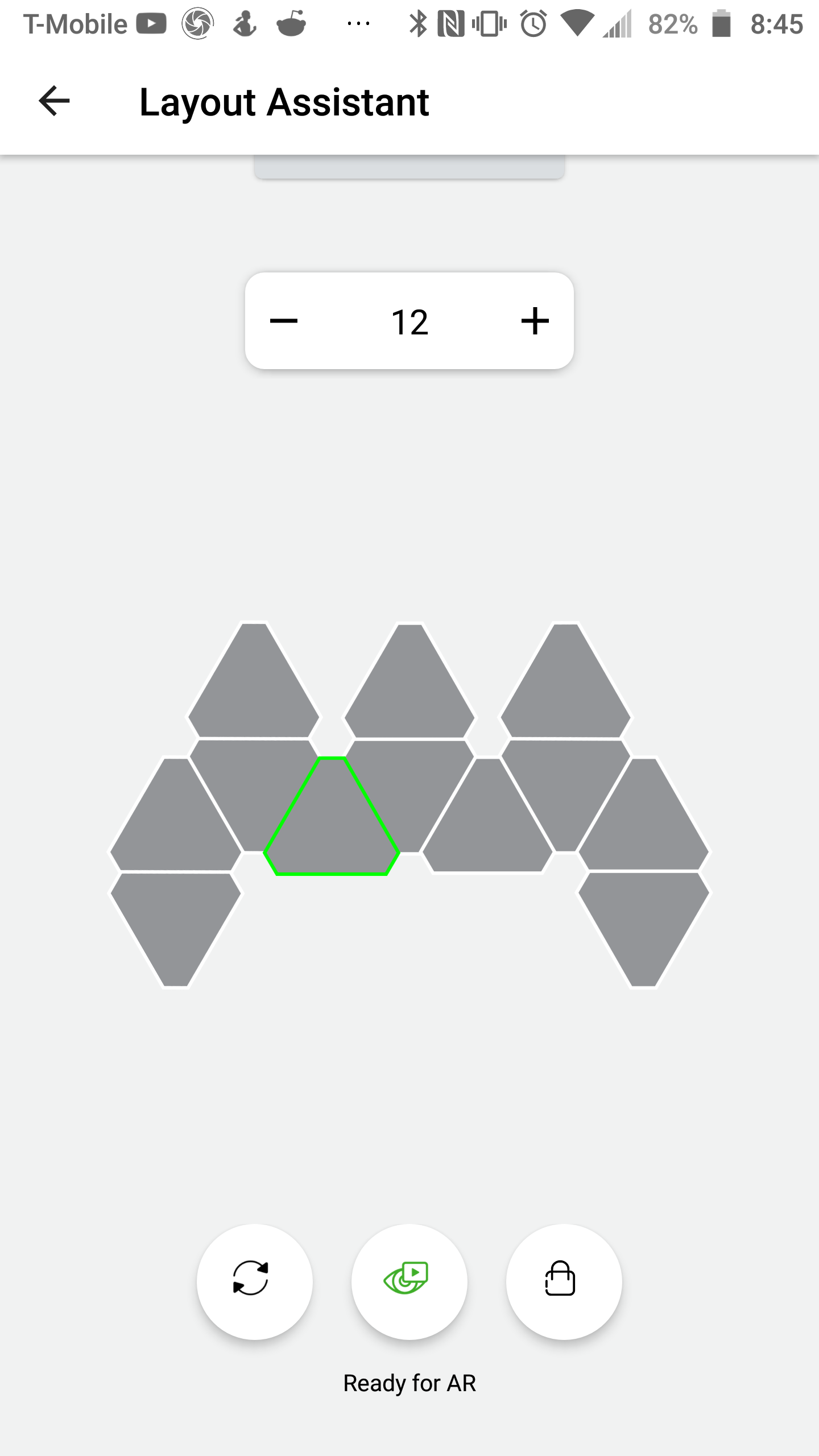
-
Nanoleaf Rhythm Review #4
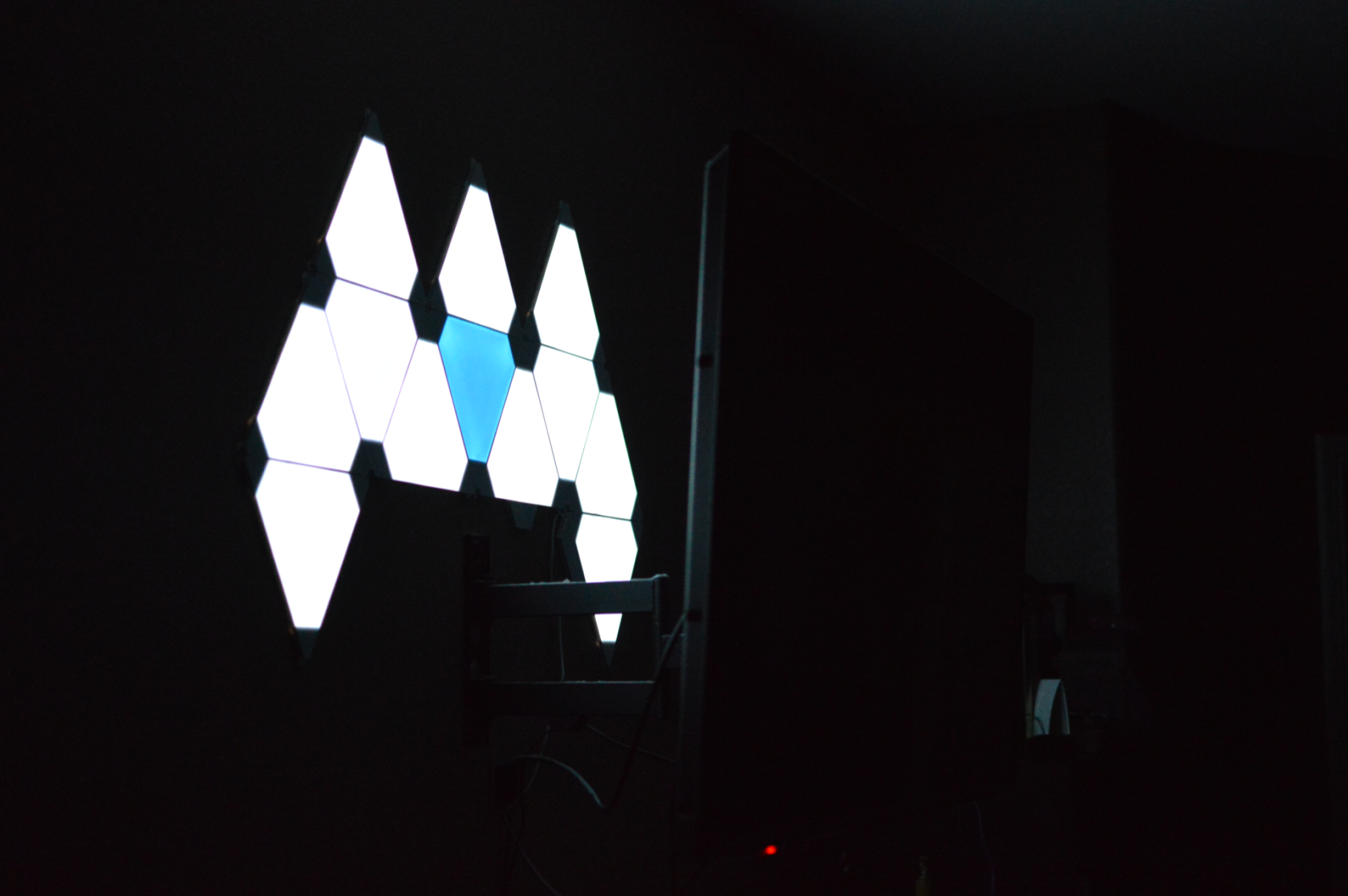
-
Nanoleaf Rhythm Review #5
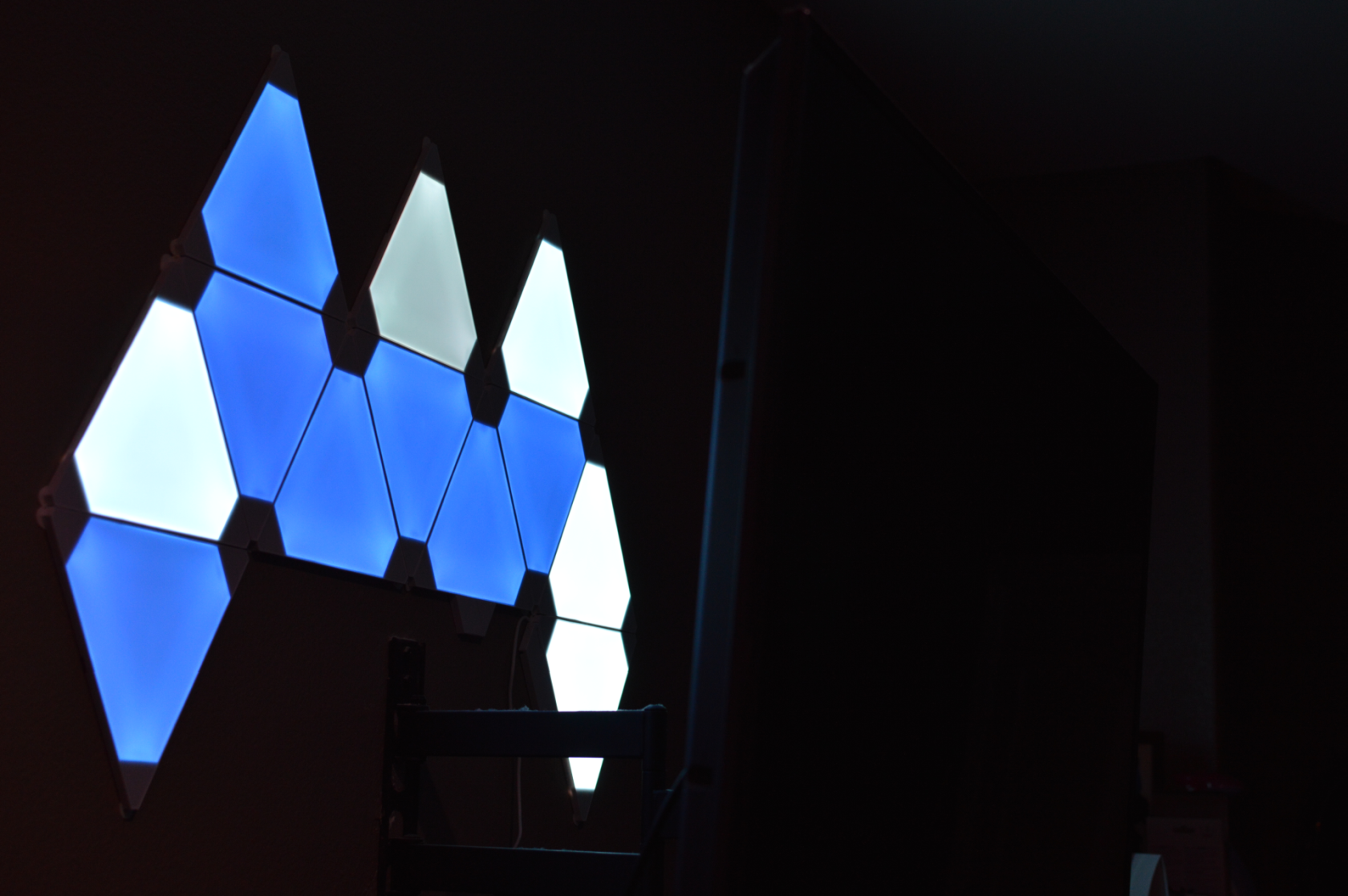
-
Nanoleaf Rhythm Review #6
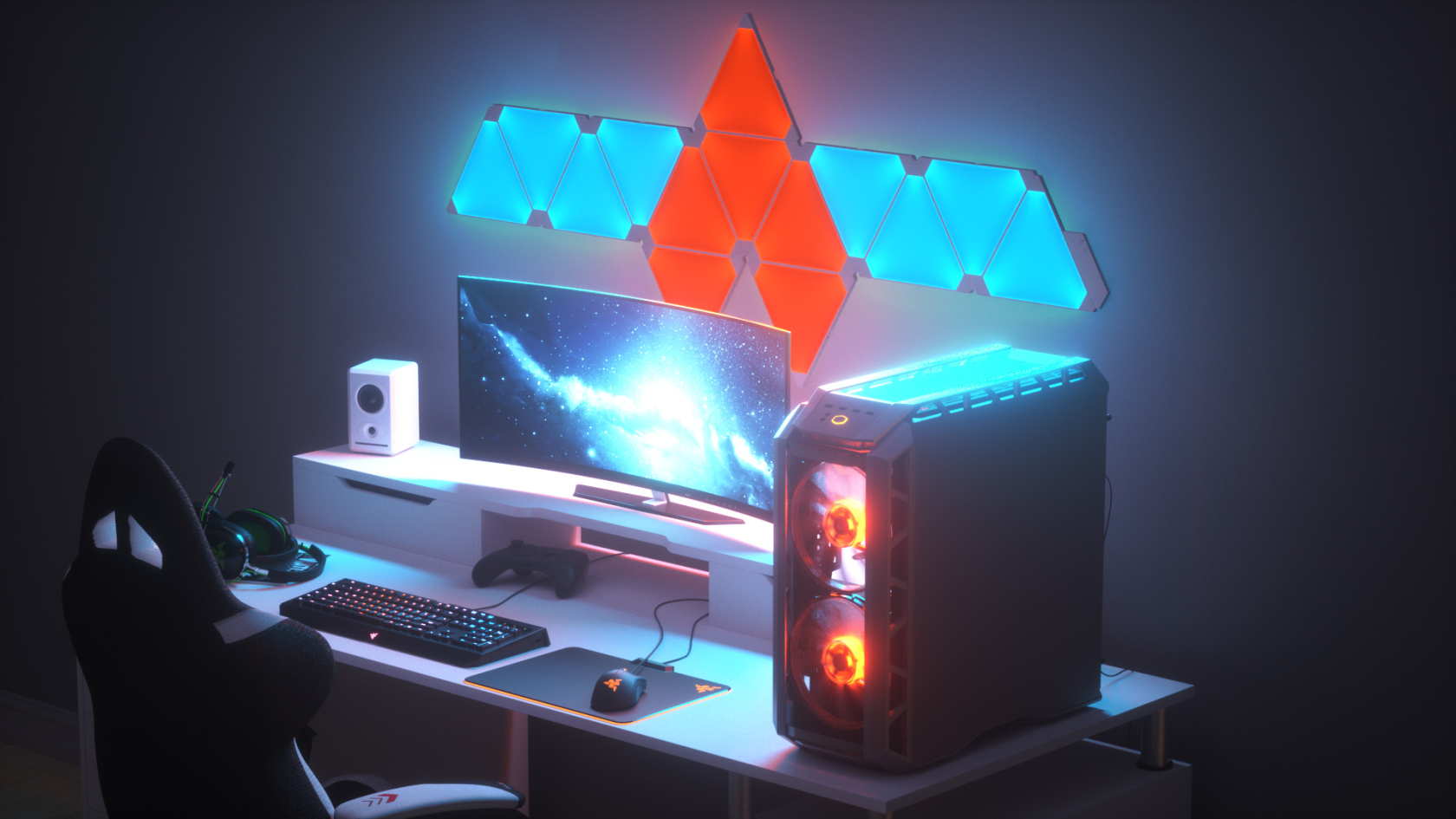
-
Nanoleaf Rhythm Review #7
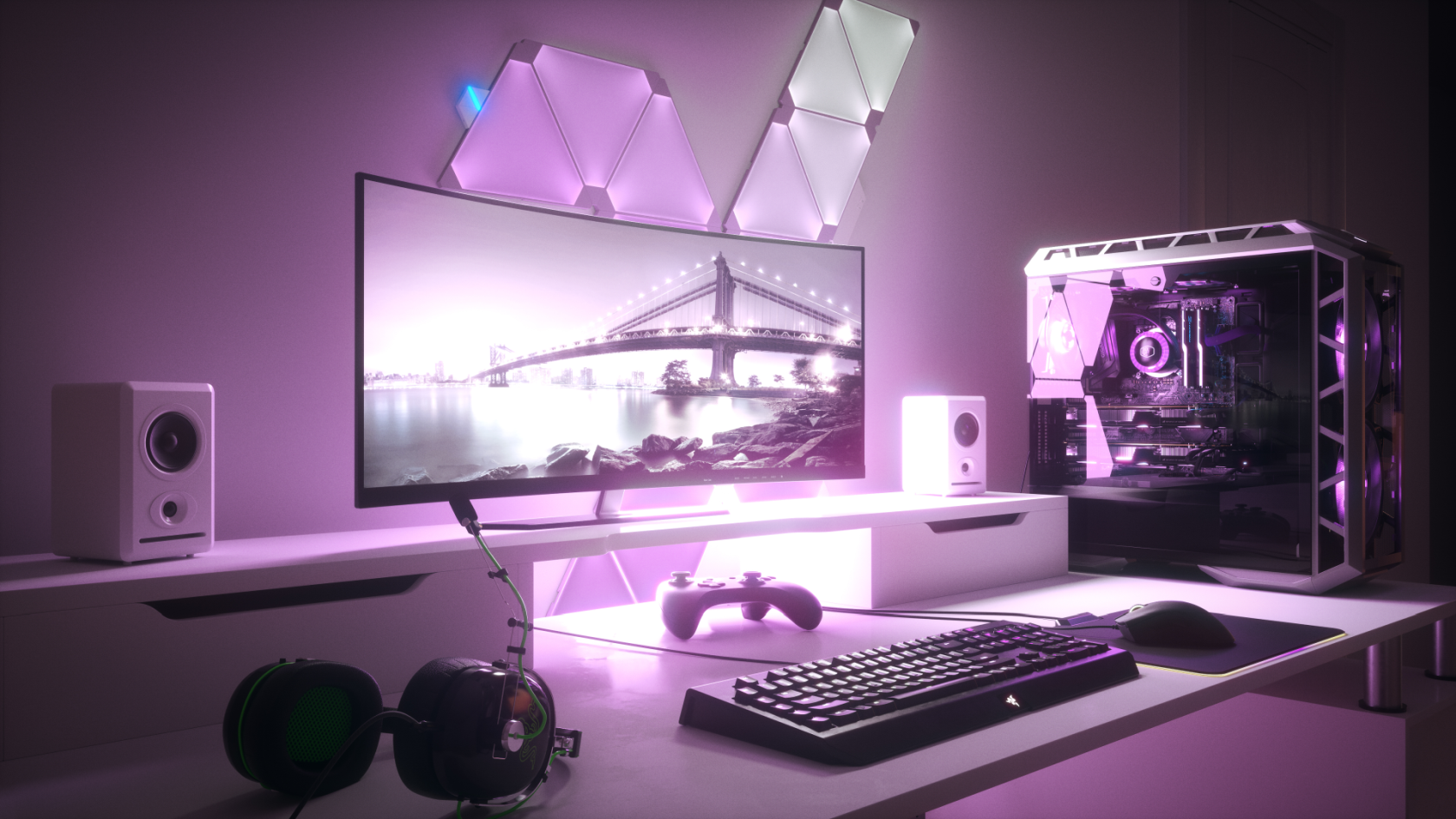
-
Nanoleaf Rhythm Review #8
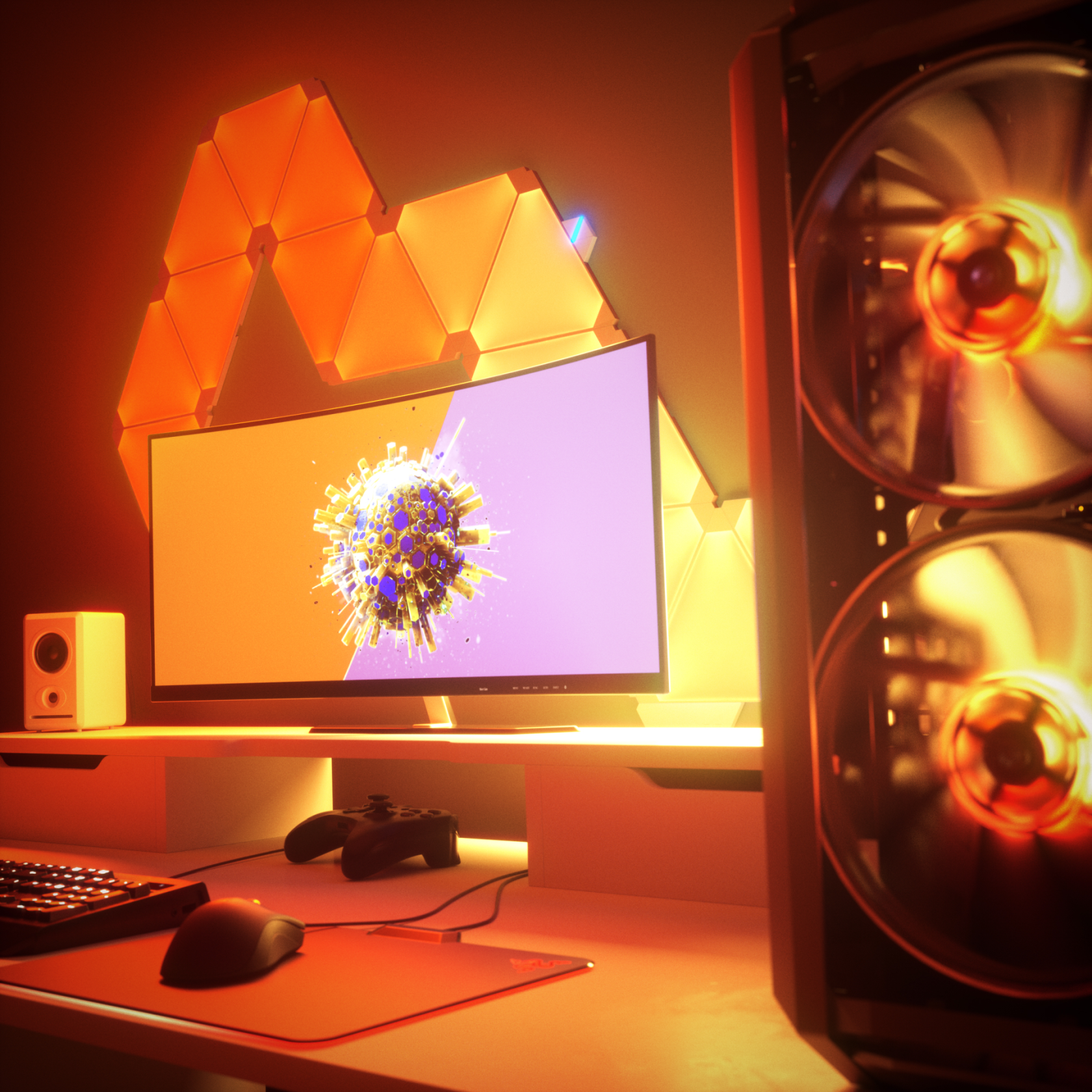
-
Nanoleaf Rhythm Review #9
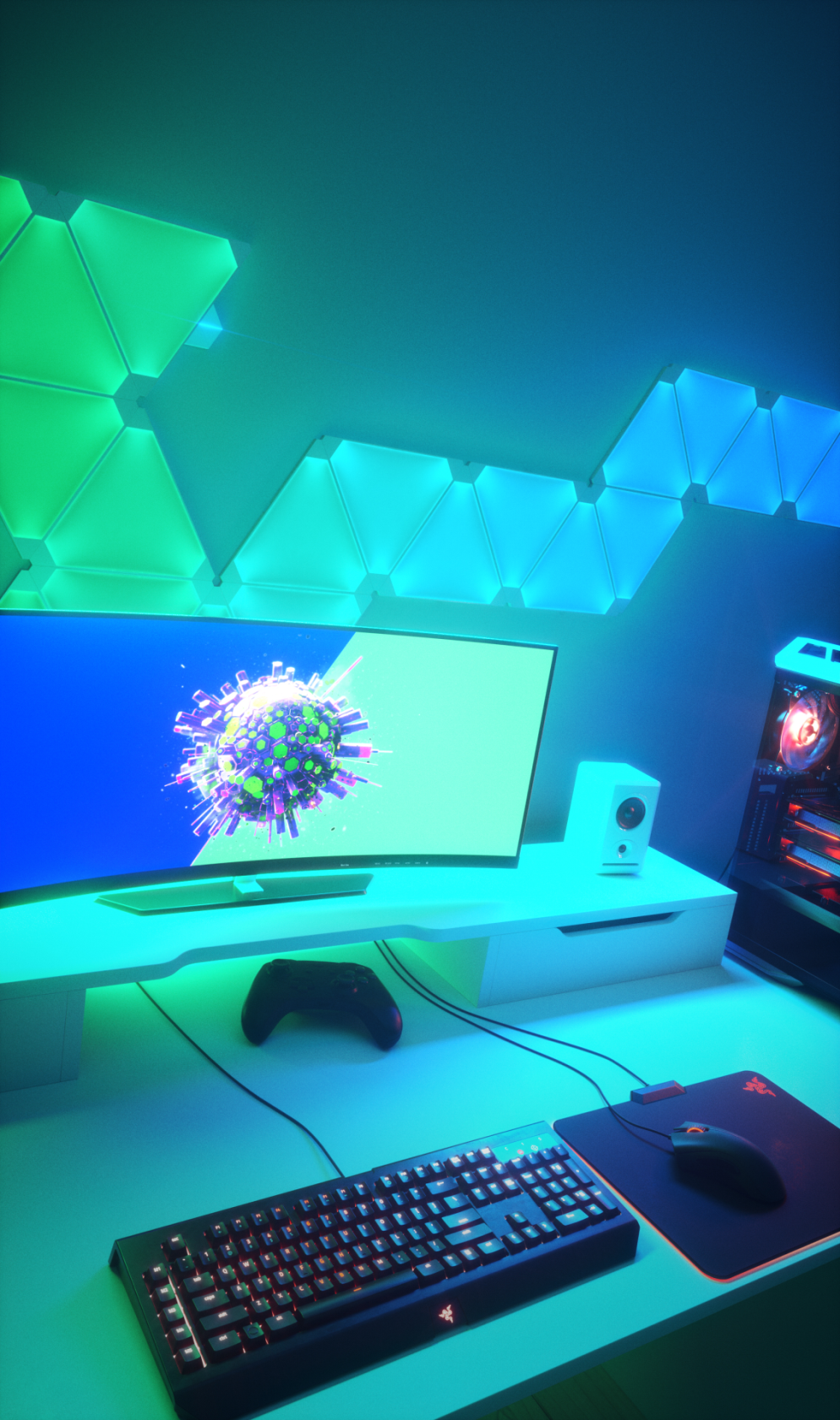
-
Nanoleaf Rhythm Review #10
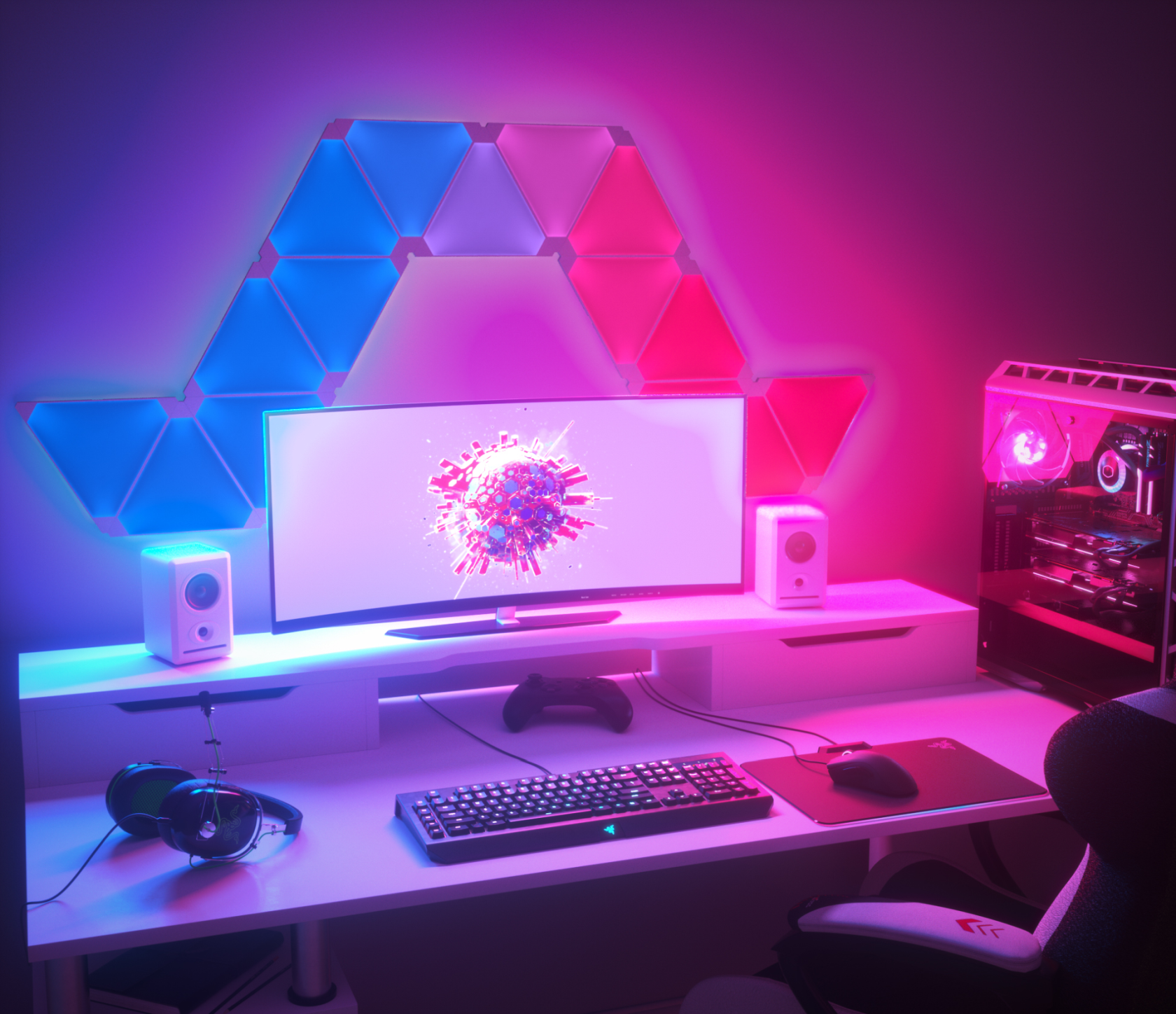
-
Nanoleaf Rhythm Review #11

-
Nanoleaf Rhythm Review #12

-
Nanoleaf Rhythm Review #13
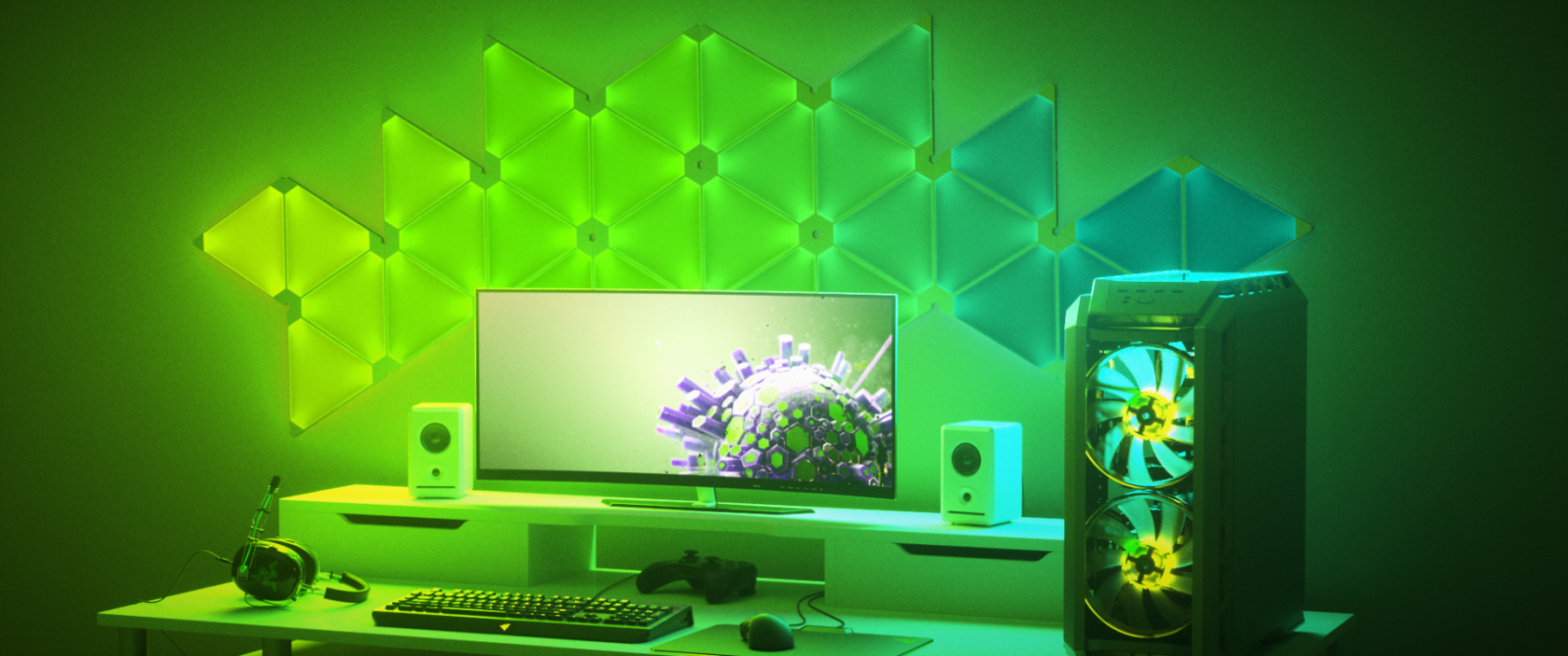
-
Nanoleaf Rhythm Review #14
